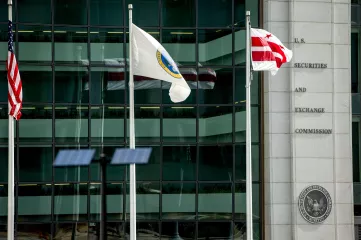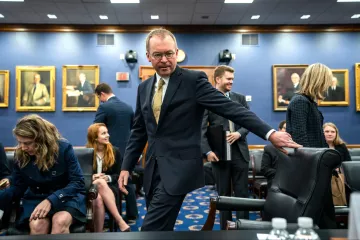- | Financial Markets Financial Markets
- | Expert Commentary Expert Commentary
- |
Fintech Sandboxes at the Bureau of Consumer Financial Protection
A Q&A with Brian Knight
Bureau of Consumer Financial Protection (BCFP) Acting Director Mick Mulvaney recently announced his plans to begin a “fintech sandbox” at the Bureau. Below, financial regulation expert Brian Knight explains what that means and why it matters:
In one relatively short sentence, how would you describe the idea of a fintech sandbox to someone who had never heard the term?
A regulatory sandbox is generally a program that allows companies to offer products and services in a limited way under a modified regulatory regime while providing information on the experiment to their regulator.
The announcement that the BCFP would be developing a fintech sandbox was pretty vague, but we do know that they plan to work with the Commodity Futures Trading Commission. Does the CFTC’s involvement give us any hints as to what the Bureau’s sandbox might look like?
It's not clear. The CFTC is also in relatively early days with their innovation efforts, though a little ahead of the BCFP. The CFTC has not launched its own sandbox, but it is possible there may be some efforts at collaboration or at least sharing experiences and best practices.
What other examples of regulatory sandboxes do we have to go on, and what lessons should the Bureau take from those examples?
The most established sandbox is the United Kingdom's Financial Conduct Authority (FCA), but the FCA is a licensing organization and the BCFP is not. One major component of the FCA sandbox is it allows companies to try things they would need a license for without having to get the full license. This isn’t a factor for the BCFP. As such, I suspect the BCFP’s sandbox will likely focus more on limiting regulatory exposure if an experimental product turns out to inadvertently violate relevant law.
Mulvaney also specifically mentioned Arizona as a state that has moved forward in trying to establish their own sandbox. Would the Bureau’s efforts likely eliminate the need for states to experiment with their own regulatory models, or is there room for federal and state regulators to both operate in this space?
State experimentation is still very useful in this context, in part because states are licensing/chartering entities, so they can adopt models like the FCA (and Arizona is doing something like this). Also, the states can provide 50 different laboratories (51 including DC) that can set up different sandboxes with different focuses or methods, the learnings of which can be exported to the country as a whole.
If you were advising the Bureau, what’s the one thing you’d tell them to do in order to maximize the chances that their sandbox will be a success?
I would recommend that they work hard to develop trust with the firms that would enter the sandbox. Given the BCFP’s reputation as being a sometimes overly aggressive regulator, firms may not feel comfortable exposing themselves in a sandbox environment where the regulator gets easy access to information on experimental products. The BCFP needs to convince firms that they will not be painting a target on their backs if they enter the sandbox while at the same time making certain there is adequate consumer protection.
And what’s the biggest potential pitfall you would caution them about?
The BCFP needs to balance adequate consumer protection (or consumers won’t be willing to try experimental products) without being seen as draconian or using the sandbox as a stealth tool for enforcement. I think this is a balance that can be done, since the types of companies likely to use a regulatory sandbox are unlikely to be bad actors anyway, but the BCFP will need to strike this balance in a credible and transparent way.


